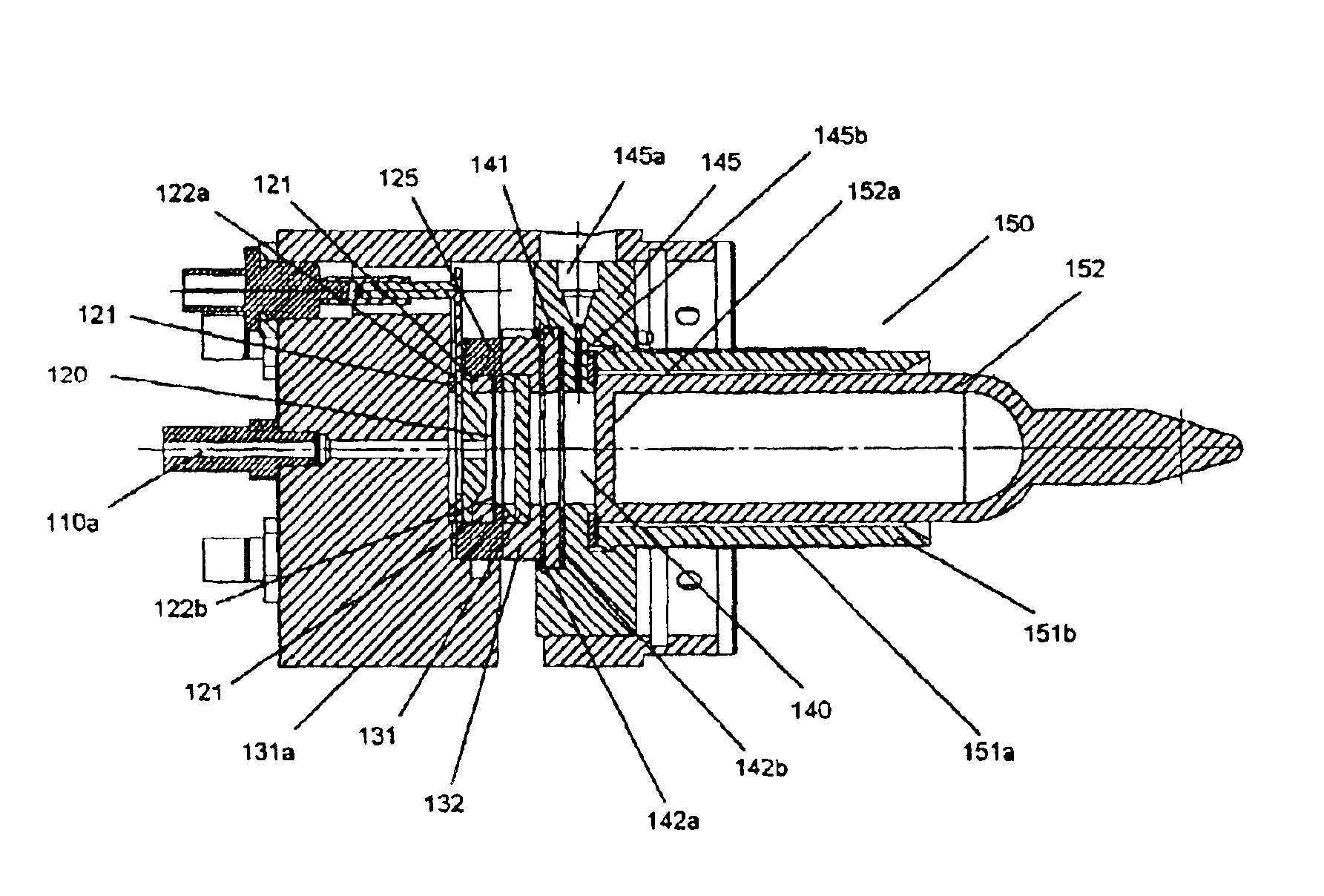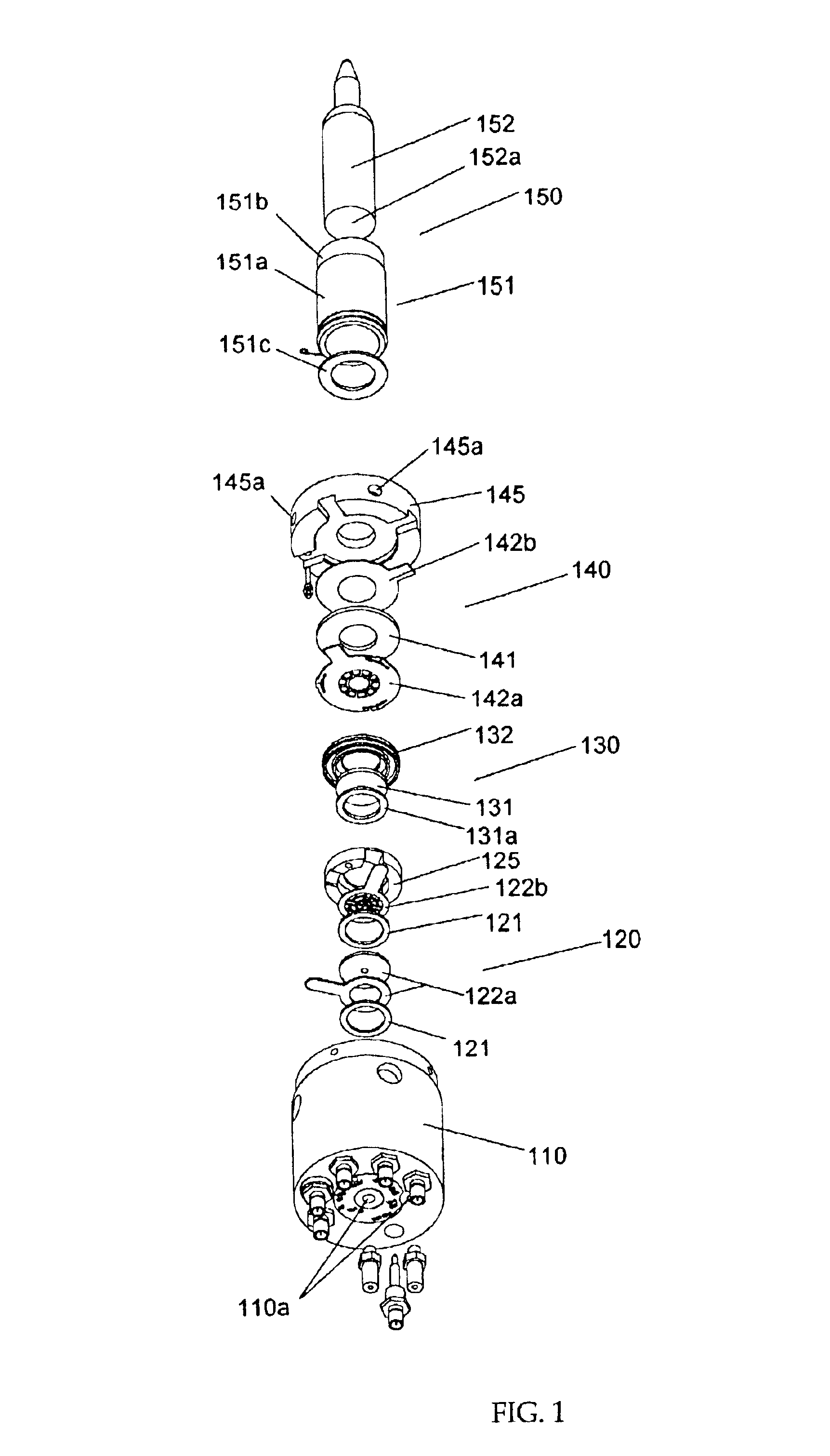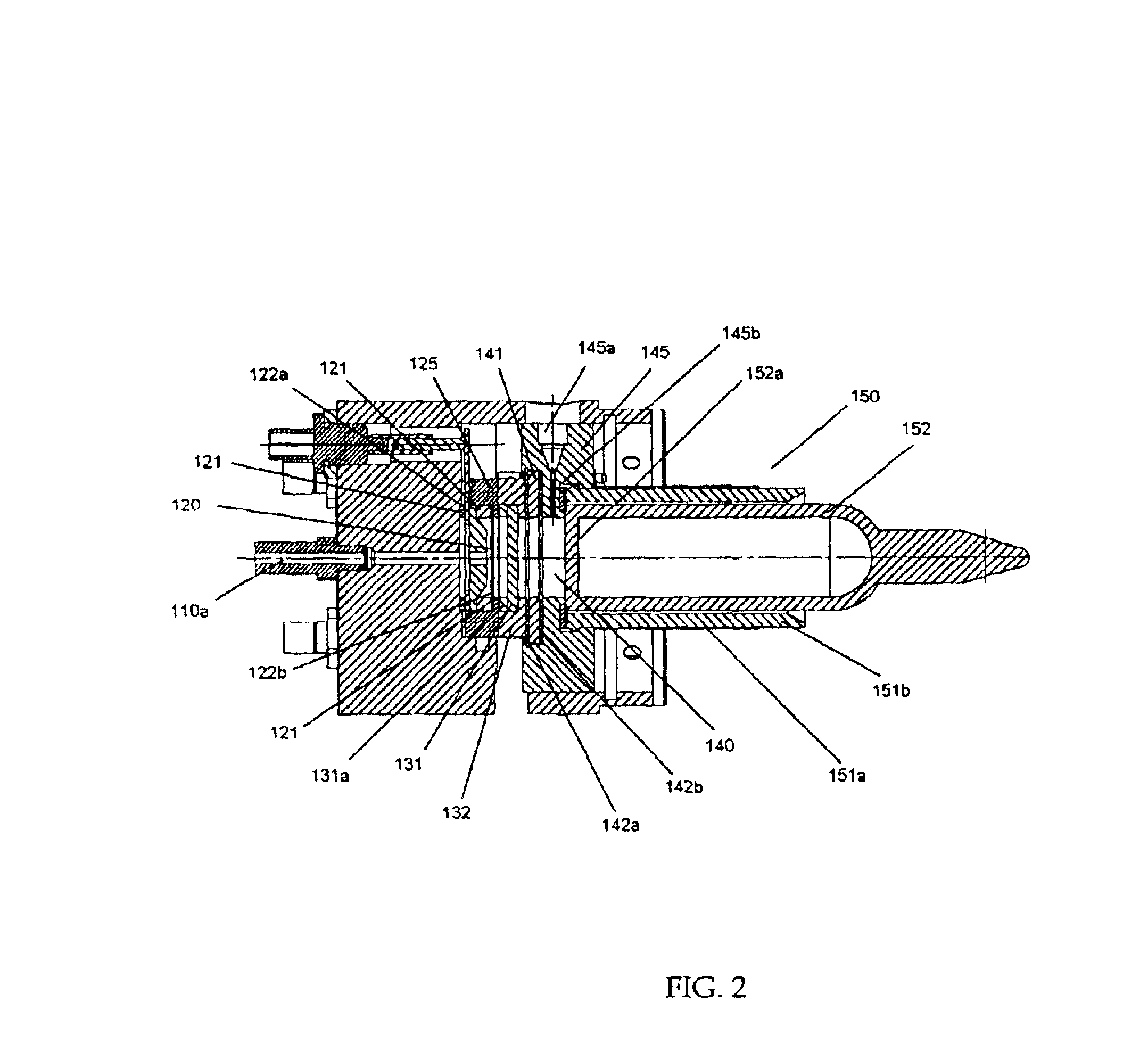Photoionization detector with multiple ionization cells
a technology of ionization cell and detector, applied in the field of photoionization detector, can solve the problems of generating less accurate results, uneven spacing of electrodes, and negative impact on the overall sensitivity of the detector
- Summary
- Abstract
- Description
- Claims
- Application Information
AI Technical Summary
Benefits of technology
Problems solved by technology
Method used
Image
Examples
Embodiment Construction
FIG. 1 shows an exploded view and FIG. 2 shows a sectional view of a photoionization detector in accordance with an embodiment of this invention. Detector housing 110 holds a first ionization cell 140, a window assembly 130, a second ionization cell 120, and an ultraviolet (UV) radiation source 150.
In one embodiment, UV radiation is generated by a UV lamp 152. The UV lamp body is made of glass and is filled with krypton, argon, xenon, or helium and a UV lamp window 152a on the end of the lamp, the UV lamp window 152a made of a material that is transmissive of UV radiation such as magnesium fluoride, lithium fluoride, barium fluoride, strontium fluoride, calcium fluoride or sapphire. The lamp is placed in a radio frequency (RF) inductive coupler 151 that is comprised of a RF holder 151b made of polytetrafluoroethylene (PTFE) and an inductive coupler coil 151a wound around the RF holder 151b, the inductive coupler coil 151a being connected at one end to an RF oscillator circuit. Excit...
PUM
 Login to View More
Login to View More Abstract
Description
Claims
Application Information
 Login to View More
Login to View More - R&D
- Intellectual Property
- Life Sciences
- Materials
- Tech Scout
- Unparalleled Data Quality
- Higher Quality Content
- 60% Fewer Hallucinations
Browse by: Latest US Patents, China's latest patents, Technical Efficacy Thesaurus, Application Domain, Technology Topic, Popular Technical Reports.
© 2025 PatSnap. All rights reserved.Legal|Privacy policy|Modern Slavery Act Transparency Statement|Sitemap|About US| Contact US: help@patsnap.com



